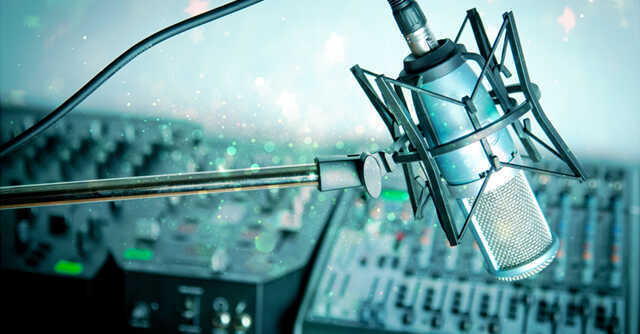
Can India's radio stations go digital?


Titas Basu, a 30-year-old resident of Noida, misses the Bangla FM stations she used to listen to back in her hometown of Kolkata. FM radio, today, is analog and broadcasts using terrestrial antenna, which works over short distances only. As a result, the Bangla version of one FM station can only be heard in West Bengal.
This is among a host of problems that firms are trying to solve by modernizing FM radio for the digital age. Firms like Xperi Corporation and standards body Digital Radio Mondiale (DRM) are trying to push radio stations in India to switch to digital radio, which can allow them to take on streaming services like Spotify, Apple Music, Gaana and more.
DRM is a consortium of radio broadcasters, including the UK’s British Broadcasting Corporation (BBC), France’s Radio France Internationale and Germany’s Deutsche Welle, which designed a set of digital audio broadcasting technologies. American Xperi, on the other hand, owns digital radio services provider HD Radio.

According to Ashruf El-Dinary, senior vice president of digital platforms at Xperi, digital radio will allow radio stations to display album art in songs, run banner ads and more, just like platforms that stream music. He also said that it allows broadcasters to “push up to four programmes” on the same channel. Which means that Basu will be able to listen to both Delhi and Kolkata versions of the same radio station, irrespective of where they are.
They can also include information on artists, song lyrics and more, through external partnerships, and provide clickable links to sponsor pages and more.
The DRM has already implemented digital radio services in partnership with India’s national radio broadcaster, All India Radio (AIR), back in 2017. It has also partnered with Hyundai, Maruti Suzuki, Mahindra and MG Motors etc. to bring DRM radio to in-car infotainment units, since 2018. HD Radio, meanwhile, has held a test pilot with AIR in 2020 and 2021, but is yet to launch commercial radio services in the country.

But digital radio services face major challenges in India too, and none of these partnerships have really yielded big results yet. A senior executive with a leading private radio broadcaster in India, agreed that digital radio does indeed bring advantages, and also offers better signal strength and audio quality. However, he said that while there were “primary-level conversations” held between digital radio providers and broadcasters over the past two years, discussions have somewhat tapered off lately.
He requested anonymity since conversations are still in progress.
“There’s interest among users, too, but a lack of clear direction from the government has held this sector back,” said Dinary. According to the executive quoted above, there’s a lack of clarity and direction from the government as well, which hampers adoption from both broadcasters, partner firms like automakers, and users, who will have to buy the right kind of devices.

Dinary said that the government needs to set “clear directions” in terms of digital broadcasting standards that India should adopt. Policy clarity will help firms like HD Radio leverage smartphone users and partner with phone makers, while radio firms can move on deals too. The executive quoted above said that adopting digital radio is affordable for radio stations, even as they face pressure from internet-based entertainment means.
To be sure, digital radio is different from internet radio. The latter uses data connectivity to live-stream radio programming over the internet, while digital radio transmits digital signals over the regular FM frequencies by adding a layer of new equipment on top of traditional radio transmitters, and hence doesn’t need data connectivity.
Noel Keymer, an ex-radio jockey with AIR and Red FM, said that a lack of usage standards has previously hurt the Indian radio industry as well. “More than a decade ago, a company in India had attempted to create a multi-band radio broadcast experience with hundreds of 24-hour radio channels based on various themes. While the service had promise, it failed due to the lack of receivers for the service, and it never got enough users to sustain,” he said.

According to Dinary, Xperi has 400 million listeners in the US through partnerships with broadcasters, though government mandates are yet to be seen. The UK government, on the other hand, has been monitoring the progress of digital radio since the third quarter of 2021. Norway became the first country to completely switch off analog radio in 2017, while German broadcasters have used the standard since 2020.
While not much data is available on a prospective market size in India, aMarch 2022 report from FICCI-EY, said that India’s radio industry was worth Rs. 1600 crore in 2021, and is scheduled to hit Rs. 2100 crore in the next three years. It also said that ad volumes recovered 29% over 2020, but remained 6% behind 2019 in the industry, while ad rates fell 13%.
India has an estimated four million cars with radio sets capable of digital broadcasts right now, and FM radio receivers were prevalent in around half of the top 10 phone brands, the report noted. Firms like Xperi remain hopeful that they will be able to ramp up the user-base through these sources.

